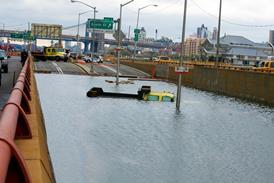A: Yes, you can connect a PC directly to the recorder. There is no need for a small network to be installed and no rocket science involved in programming.
Firstly you will need to check that the PC has a working network card installed. If you go to Start/Settings/Control panel and then select the Network icon you will see a list of installed devices. If installed you will see TCP/IP-> followed by the name of you're Ethernet card. If not you will need to purchase a card and install the drivers as per their instructions.
TCP/IP (Transmission control protocol/Internet protocol) is a widely used Internet protocol for transmission over the Internet.
You also require an RJ45 network crossover cable. These cables can be purchased from any good PC outlet.
Now you can concentrate on setting up what's called a Back to Back connection.
We first have to give the Digital Recorder a TCP/IP address and Sub Net mask.
Because you are not connecting to an existing LAN or going on the web, you need not worry about IP address conflict so can select your own.
So let's say you pick 123.123.123.001 and a sub-net of 255.255.000.000. Enter these parameters into your recorder following the relevant manufacturer instructions.
Slight variations
Next we turn to the PC. Because there are many operating systems i.e. 98/XP etc some of the ways you get to the control panel and network settings may vary slightly.
Once you have them talking it’s time to read the recorder’s manual and install their viewing software – hopefully all will work successfully
Just have a quick look around and you will soon find them. The following is done on Windows 98. We now have to give a TCP/IP address and a Sub Net to the PC.
- Go to Start/Settings/Control panel and select the Internet Options icon. The Internet Properties page will now be displayed on screen.
- From the Tabs click on Connections and then select Never dial a connection, then Apply.
- Now go back to Control panel and select the Network icon.
- Highlight the TCP/IP related to your network card. This is the same one as you either installed, or found earlier on in paragraph one.
- You will now see that the Properties tab underneath has become available. Click on this. Now you will have the TCP/IP Properties window on screen.
- Select the IP Address from the tabs and select Specify an IP Address.
- The two boxes below are now available for entering the TCP/IP address and Sub-net. Remember we need to keep the TCP/IP addresses apart, so lets enter 123.123.123.002 but the same sub-net of 255.255.000.000
- You will now be prompted to reboot the PC. (Not XP)
- The programming side of things is now complete so its time to see if they are talking to each other. To check this we do something that's called pinging. From the Start select Run. In the Run box type in Command then OK. A black Dos screen will now be visible.
- After the > sign type in ping 123.123.123.1 which is the IP address of the recorder and press Enter.
- When you are pinging do not enter 0's preceding a number, i.e. 001.001.001.010 should be entered as 1.1.1.10
- The PC will now search for that address and report back. If you see Reply from 123.123.123.1 it's nearly time to break out the champers. However, if you see Destination host unreachable or Request timed out it's back to the coffee machine I'm afraid, then sit down and rigorously check all the above and, of course, do not forget the crossover cable.
Fault Finding
Here are a couple of quick tests you can perform. Both of these can be done via the Dos screen.
Start/Run, Type in Command then OK
- This one tests your network card and that the TCP/IP are configured correctly.
- At the > prompt type in ping 127.0.0.1 and enter. If all is OK you will get a reply message. If not, check your network card settings.
- Secondly, to check that you have entered the addresses correctly at the > prompt type in winipcfg then enter.
The screen will now display the PC's TCP/IP and Sub Net settings.
If these do not match, re-enter as above.
Once you have them talking its time to read the recorder's manual and install their viewing software and hopefully all will work successfully.
Well that's it, you've done your first back to back connection– not that daunting was it?
More familiar scenarios
I am receiving more and more questions on the networking side of CCTV products so here are a couple more scenarios that you may come across.
Where it's a requirement to have a couple of PC's talking to recorders or visa versa, a small network is needed, which is in itself really quite simple to create. The programming side remains the same (just make sure that all the TCP/IP addresses are apart). The major difference is that instead of using a back to back cable, you use normal straight through Ethernet cables and connect them from the units into a Hub. A Hub directs your request to the relevant machine and does not require any programming.
When you want to remotely dial into a network you can replace the Hub with a Router. These are network devices and combine a Hub with a Modem. They will work over PSTN or ISDN depending on the model.
A small amount of programming is needed to set these up but nothing too daunting.
Source
Security Installer





















No comments yet